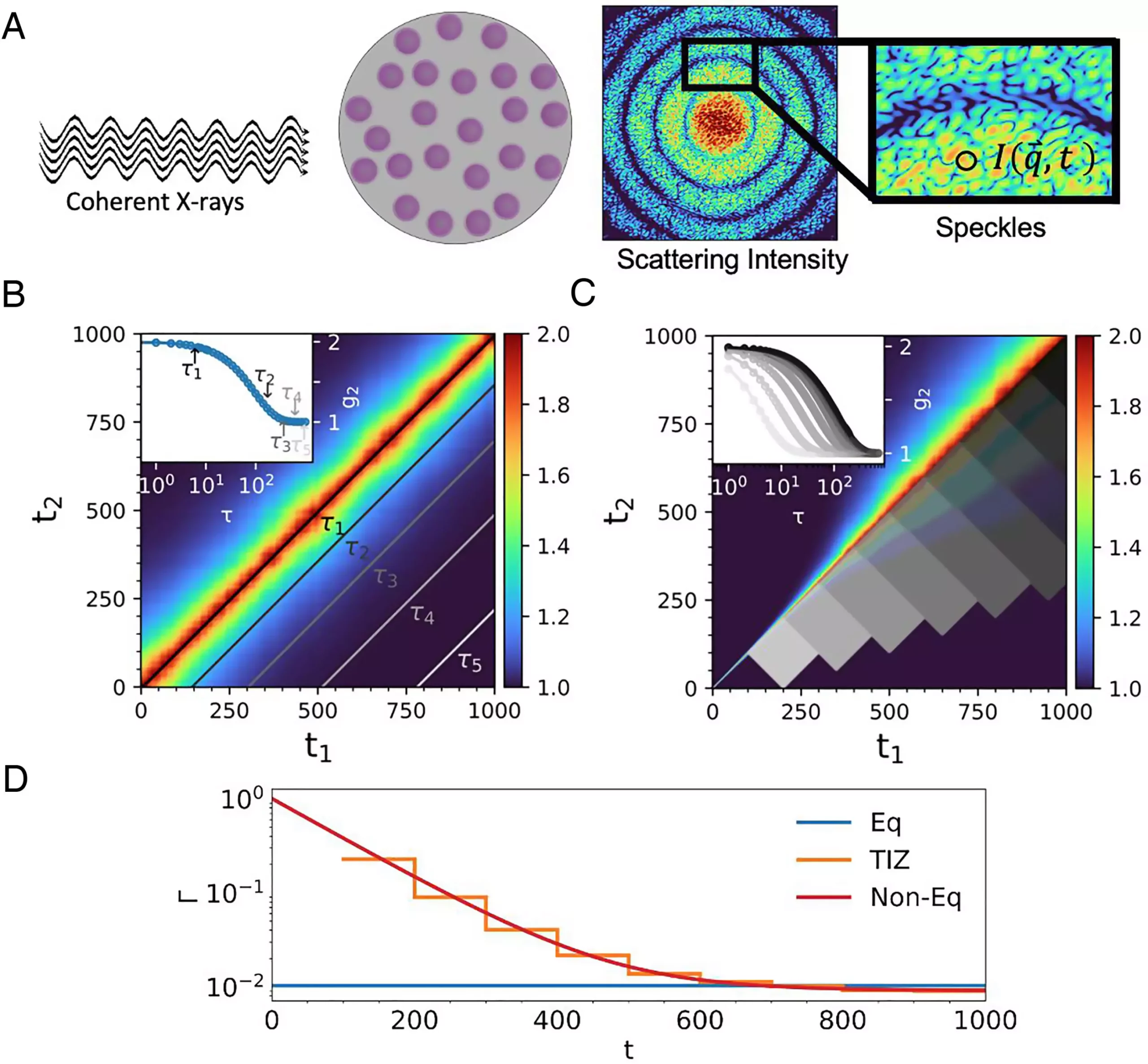The whimsical allure of Play-Doh, which has captivated children for nearly seven decades, serves as an accessible entry point into the fascinating world of soft matter. This diverse category isn’t limited to children’s toys; it also encompasses various substances such as food products like mayonnaise, materials involved in 3D printing, battery electrolytes, and even latex paints. Recent groundbreaking research conducted by scientists from the U.S. Department of Energy’s (DOE) Argonne National Laboratory and the Pritzker School of Molecular Engineering at the University of Chicago has shed light on the flow properties of soft matter at the atomic level. By employing an innovative technique known as X-ray photon correlation spectroscopy (XPCS), researchers are making strides in understanding the complex behavior of these materials.
The Nature of Soft Matter
Soft matter is characterized by its ability to undergo easy deformation when subjected to external forces, temperature changes, or chemical reactions. Matthew Tirrell, a prominent scientist associated with this research, explains that soft matter’s properties are exceptionally responsive to environmental stimuli. A practical example can be seen in everyday scenarios, such as painting a wall. When paint is applied, intricate flows occur within the material on an atomic scale. However, it’s crucial that this flow ceases once the application stops to prevent unwanted drips and uneven finishes.
This characteristic of soft matter reveals the necessity for an in-depth understanding of its flow behaviors. Graduate student HongRui He, the lead author of the study, articulates that they have developed a methodology to investigate how soft matter nanoparticles behave under stresses like mechanical forces and temperature fluctuations.
Previous research using XPCS suffered from a significant limitation: data acquisition often necessitated averaging, resulting in the loss of critical information regarding the dynamic processes at the nanoscale level. This oversight hampered the ability to draw accurate correlations between nanoparticle interactions and overall material flow properties. The recent work from Argonne and the University of Chicago addresses this shortcoming by diagnosing a vital parameter known as the transport coefficient. This coefficient serves as an essential descriptor of how well a material flows, thus elucidating its response to varying external stimuli.
Key to this endeavor was the use of a specialized X-ray beam available at the Advanced Photon Source (APS). This unique beam is designed to detect minute disorders within materials over time at the nanoscale, facilitating a more nuanced analysis of soft matter.
Applying the Techniques: Real-World Testing
To test their innovative technique, researchers focused on a complex soft material comprising a concentrated mix of spherical charged particles suspended in a salt solution. The experiment employed shearing, a process analogous to spreading a thick lotion on hands and rubbing them together. Insights gathered from this shearing process unveiled complex changes in the material’s flow properties.
Initial observations revealed the emergence of three distinct bands of nanoparticles—fast-moving, slow-moving, and static. Yet, within just 15 seconds, the fast-moving band disappeared, only to be reconstituted approximately 40 seconds later. Such intricate behaviors were previously unattainable through existing analytical methods, marking a substantial advancement in the field of XPCS.
The importance of this research extends beyond academic interest. Suresh Narayanan, a physicist involved in the study, emphasizes that understanding these fluctuations in soft matter provides valuable insights into natural phenomena. Applications could range from predicting geological events like landslides and earthquakes to understanding biological processes such as arterial plaque formation.
The timing of this research is particularly valuable as the APS undergoes a significant upgrade, which includes the development of a new suite of beamlines dedicated to XPCS. This enhancement will leverage improved X-ray beam capabilities, facilitating advanced XPCS experiments slated to commence later in 2024.
Moreover, researchers utilized the resources available at the Center for Nanoscale Materials, another DOE Office of Science user facility, to effectively characterize the particles within their experimental framework. This holistic collaboration illustrates the fusion of cutting-edge technology with fundamental scientific inquiry.
As research progresses, the insights gleaned from soft matter and advanced measurement techniques like XPCS have the potential to revolutionize our understanding of materials that surround us—from enhancing everyday products to unraveling the mysteries of complex natural systems. The intersection of play, science, and innovation continues to expand, revealing the intricate tapestry of interactions that dictate the behavior of materials we often take for granted. Through continued research efforts, the complexities of soft matter may finally yield the secrets to its profound impact on both science and daily life.

